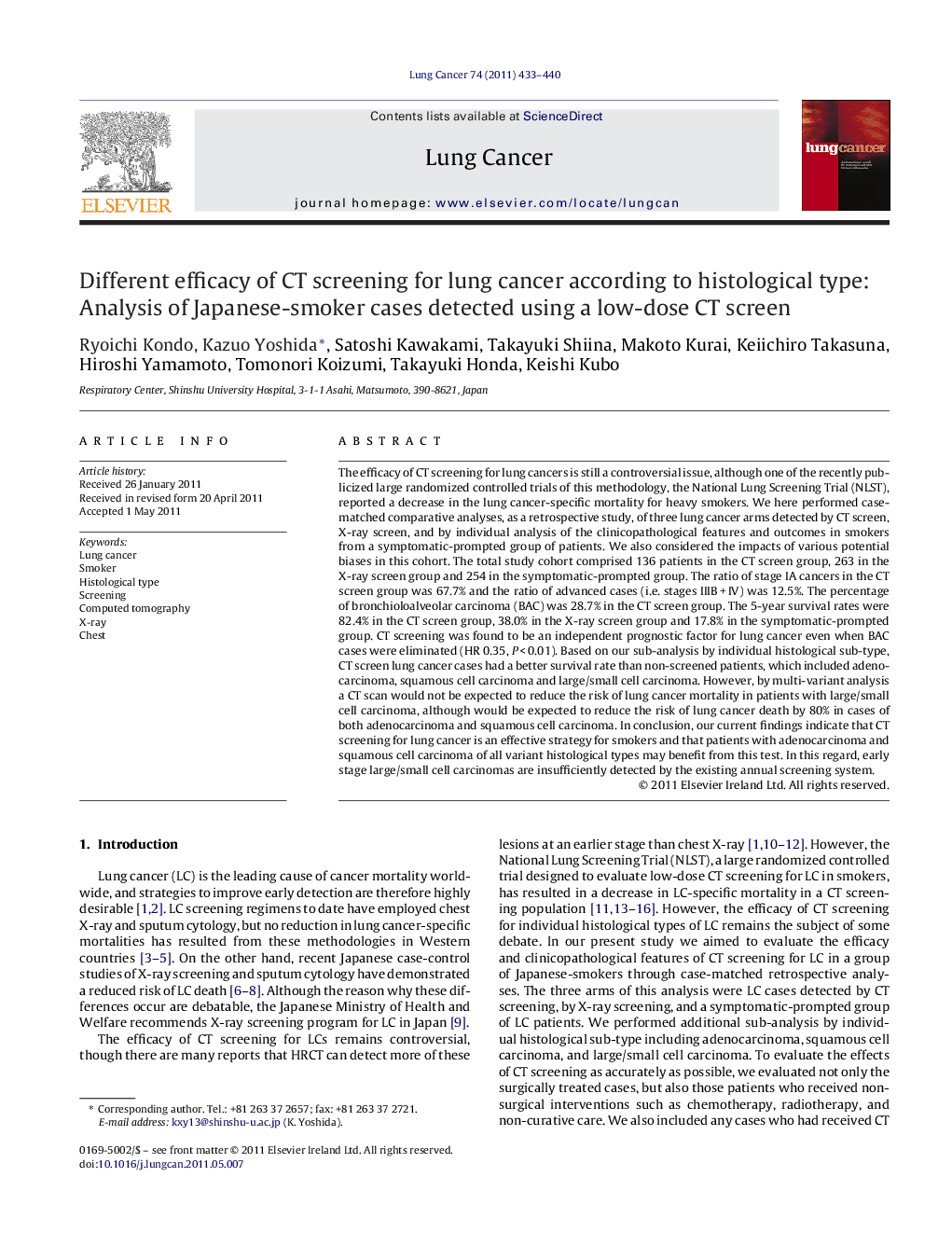| Article ID | Journal | Published Year | Pages | File Type |
|---|---|---|---|---|
| 10911433 | Lung Cancer | 2011 | 8 Pages |
Abstract
The efficacy of CT screening for lung cancers is still a controversial issue, although one of the recently publicized large randomized controlled trials of this methodology, the National Lung Screening Trial (NLST), reported a decrease in the lung cancer-specific mortality for heavy smokers. We here performed case-matched comparative analyses, as a retrospective study, of three lung cancer arms detected by CT screen, X-ray screen, and by individual analysis of the clinicopathological features and outcomes in smokers from a symptomatic-prompted group of patients. We also considered the impacts of various potential biases in this cohort. The total study cohort comprised 136 patients in the CT screen group, 263 in the X-ray screen group and 254 in the symptomatic-prompted group. The ratio of stage IA cancers in the CT screen group was 67.7% and the ratio of advanced cases (i.e. stages IIIBÂ +Â IV) was 12.5%. The percentage of bronchioloalveolar carcinoma (BAC) was 28.7% in the CT screen group. The 5-year survival rates were 82.4% in the CT screen group, 38.0% in the X-ray screen group and 17.8% in the symptomatic-prompted group. CT screening was found to be an independent prognostic factor for lung cancer even when BAC cases were eliminated (HR 0.35, PÂ <Â 0.01). Based on our sub-analysis by individual histological sub-type, CT screen lung cancer cases had a better survival rate than non-screened patients, which included adenocarcinoma, squamous cell carcinoma and large/small cell carcinoma. However, by multi-variant analysis a CT scan would not be expected to reduce the risk of lung cancer mortality in patients with large/small cell carcinoma, although would be expected to reduce the risk of lung cancer death by 80% in cases of both adenocarcinoma and squamous cell carcinoma. In conclusion, our current findings indicate that CT screening for lung cancer is an effective strategy for smokers and that patients with adenocarcinoma and squamous cell carcinoma of all variant histological types may benefit from this test. In this regard, early stage large/small cell carcinomas are insufficiently detected by the existing annual screening system.
Related Topics
Life Sciences
Biochemistry, Genetics and Molecular Biology
Cancer Research
Authors
Ryoichi Kondo, Kazuo Yoshida, Satoshi Kawakami, Takayuki Shiina, Makoto Kurai, Keiichiro Takasuna, Hiroshi Yamamoto, Tomonori Koizumi, Takayuki Honda, Keishi Kubo,
